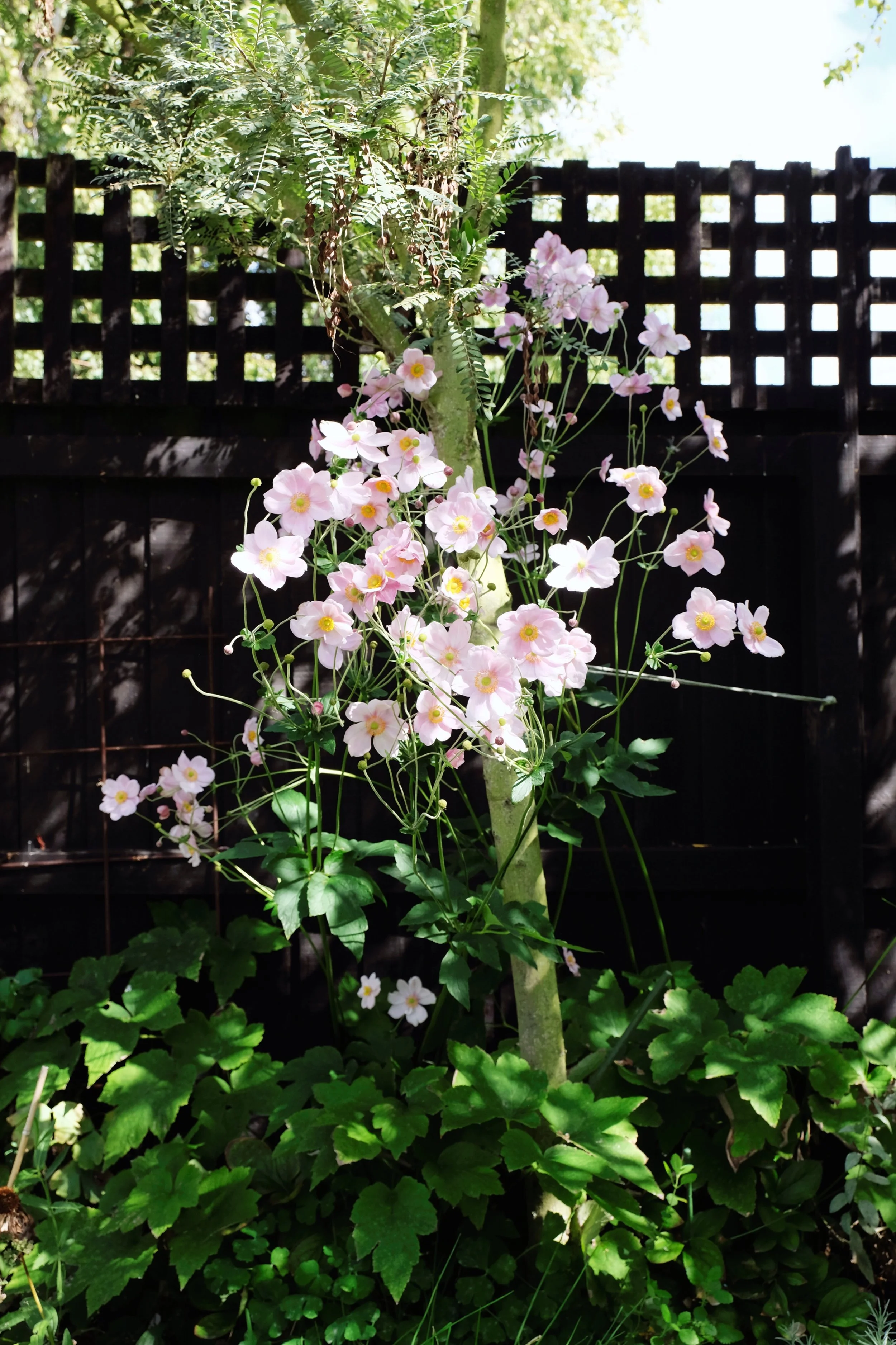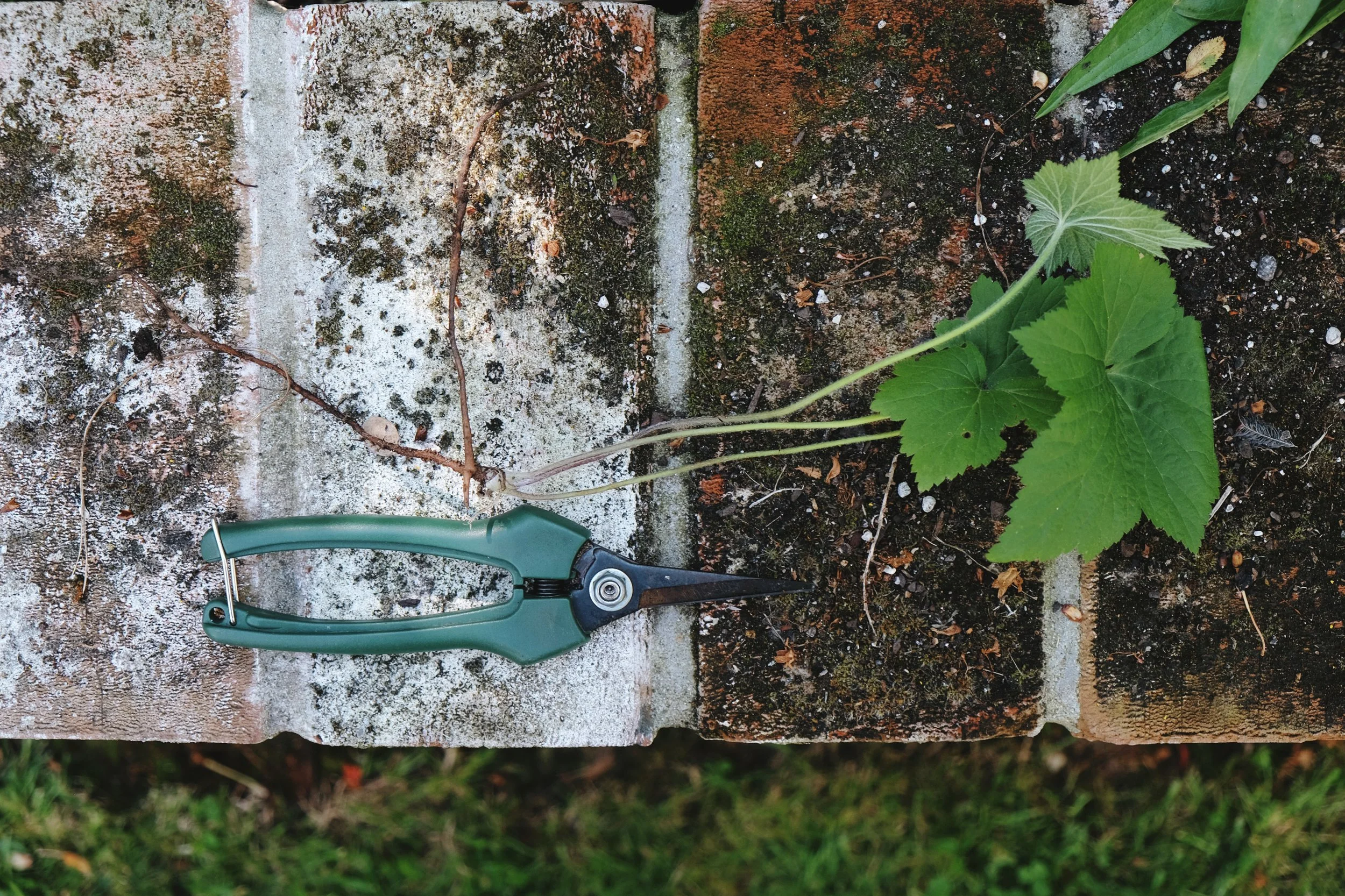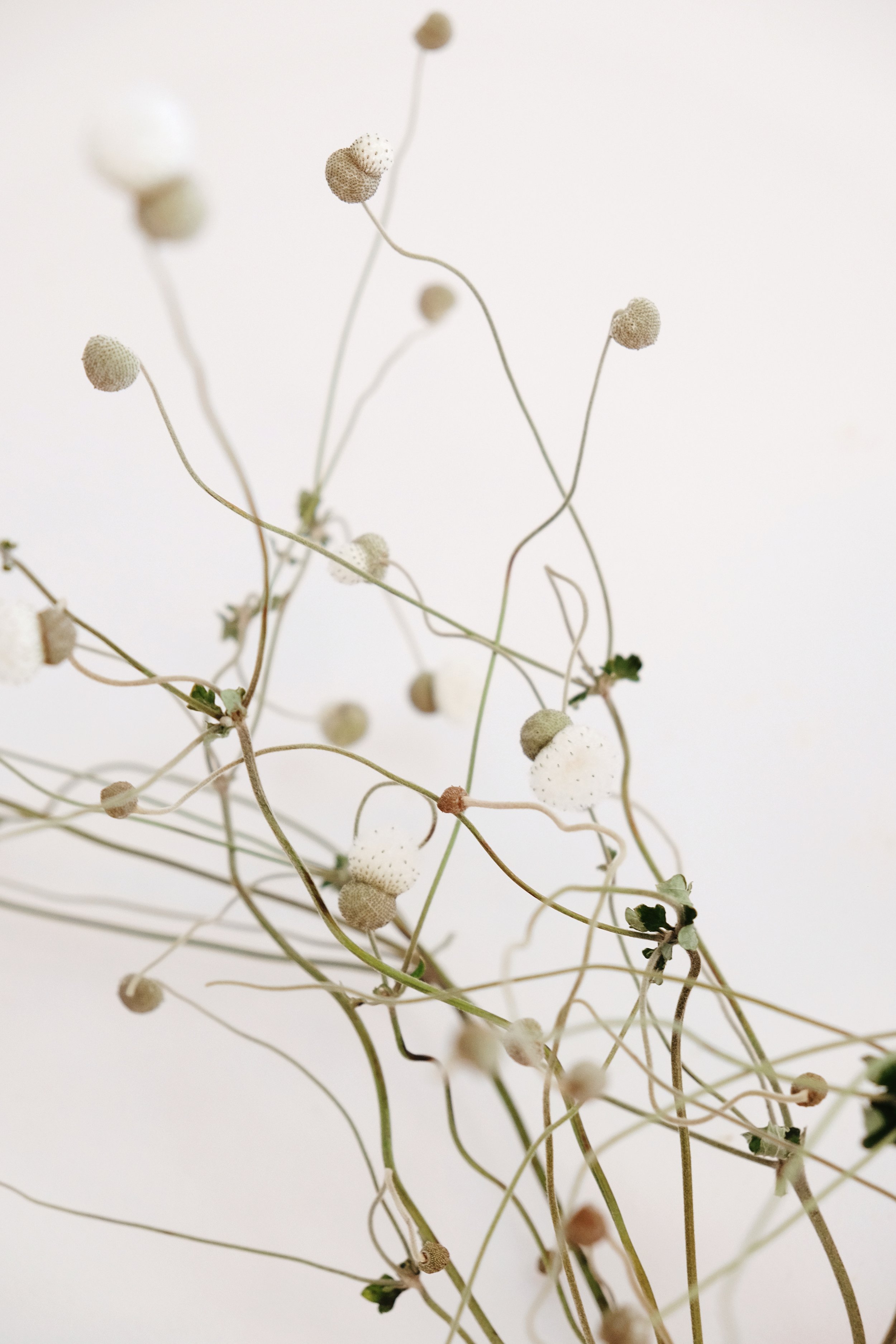Japanese Anemones
/This week I have noticed my summer flowering perennials tilting their tired heads in relief at the progressing season. They are happily setting seed, dropping petals and letting their leaves begin their slow winter wilt. While my dahlias still have some gusto left in them, and my self-seeding asters flop their star-spangled limbs all over my back bed, it’s the Japanese anemones that have been the recent star of the show.
I always feel a little nervous highlighting the more ‘eager’ plants. I know for some, Japanese anemones are the bane of their gardening life, greedily eating up ground and dominating other plants around them. But in my own experience, my two varieties have simply never spread as much as expected. I’ve even felt a bit disappointed about this, keen for them to fill those shadier, hard to plant out spots.
The fastest and easiest way to establish Japanese anemones in your garden is by division or root cuttings, taken in autumn. As most varieties found in New Zealand are hybrids, they will not always grow “true to type” of the parent plant when propagated from seed. This, of course, might be a fun experiment in itself.
They are a clump-forming perennial that send out runners to establish new plants, and it’s here you can find your gold (particularly if thieving from a generous friend’s garden!). I have found it very easy to gently uplift a small satellite plant that has rooted, snip off the running stem and directly replant elsewhere. You can choose to either pop it into a pot to care for until spring, or plant it straight into a new position in the garden. Transplanted plants nearly always immediately look dead, but with some patience, it won’t be long until you see some new green shoots emerging as, by nature, these plants are tough! Give them a year or two to come into their own.
Alternatively, if you are after a large haul of plants at minimal cost, you could propagate using root cuttings. This is done by digging up a clump (or digging around the side of one to avoid lifting) and separating off strong healthy roots, snipping them in around 10 cm sections. These sections need to include a small growth nodules, of which you will clearly be able to spot along the root. The nodules are the points where a new plant will strike from.
Lay the cuttings horizontally in a tray of moist potting mix, nodules facing upward, and cover lightly with a few centimetres of soil. Keep moist and new shoots should appear over a couple of weeks for planting out in spring, after the risk of frost.
Japanese anemone runner which I have removed to replant elsewhere.
They are wonderful cut flowers, but resist picking earlier in the season when their blooms are juvenile and soft. Each main stem has clusters of multiple blooms, and I find that if I wait for a few of these to lose their petals before harvesting, then they will last much longer in the vase.
Moving deeper into autumn, as my own plants finish littering the garden with their petals, I allow them to continue forming their attractive bobble-like seed heads. These eventually burst into clouds of cotton wool, wafting away on the wind, carrying the tiny seeds amongst it. Both the ripening bobbleheads and fuzzy bursting stages are interesting features in my winter garden. They also dry really well to make spindly, sculptural installations in a vase to enjoy through the winter.
Japanese anemones and seed heads in with astrantia, Verbena bonariensis and eringium.
The gorgeous bursting seedheads of Japanese anemones
As both my varieties, tall pink and medium height white, were pinched with permission from other gardens, I’m not entirely sure “who” they are. My research led me to think they could be Anemone x hybrida ‘Richard Ahrens’ and ‘White Knight’ respectively. Both thrive in the part shade although the tall one does fall over itself a little, a tad more sun might be ideal. These plants, romantically known as windflowers, really do cope with neglect and those tricky dry shade spots. If you plant them in full sun, they’ll beg for some watering support.
Going forward, I have my eye out for some of the more luscious, deep pink and double petaled cultivars. Some on my wish list include ‘Prince Henry’, ‘Pocahontas’ and the beautiful tones of ‘Fantasy Jasmine’.
Perhaps the fix for your hard-to-grow areas is a little Japanese anemone delight.
This is an expanded version of the article featured in my Stuff ‘Homed’ gardening column for beginners , The Press, Dominion Post and other regional papers on April 7th 2022
All words and images are my own, taken in my home and garden in Christchurch, New Zealand unless otherwise captioned.









